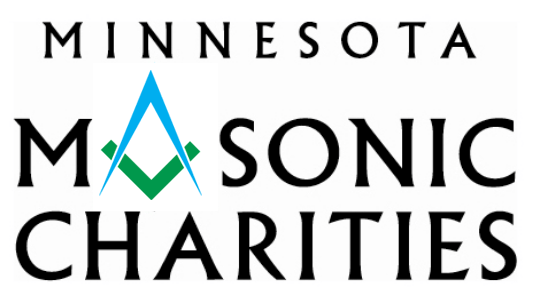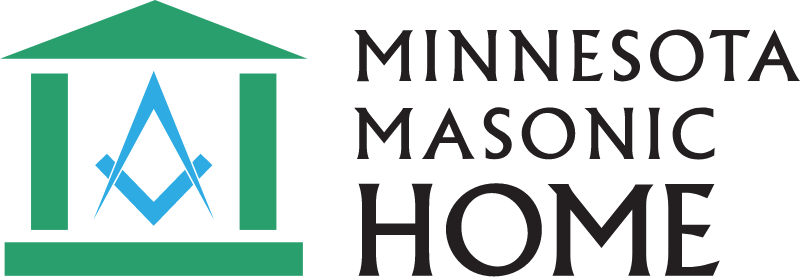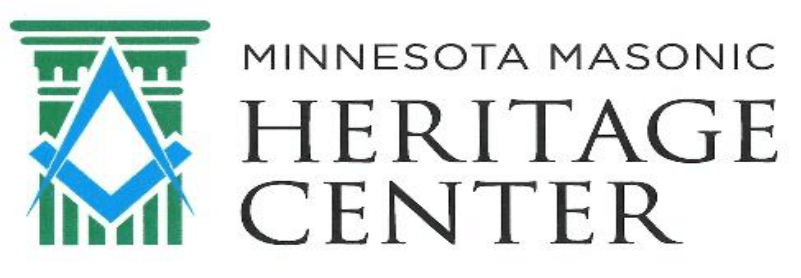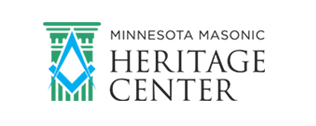Illuminating Masonic History
August 17, 2018
While museums may seem like fixed collections of artifacts, a lot goes on behind the scenes that patrons never see. At the Colonel James B. Ladd Museum and Charles Nelson Library, one ongoing task is making a thorough inventory of myriad items that are stored and displayed. And, thanks to funding from the Minnesota Historical and Cultural Grants Program, we have added two collection assistants to help us illuminate Masonic history.
Kevin Koontz and Valerie Clark came well equipped for the task when they started their work in February 2018. Kevin has a history degree from Hamline University, and most recently completed a 15,000-item inventory for the Ramsey County Historical Society. Valerie holds a Master’s degree in art history and museum studies from Case Western Reserve University. She comes to us from a job at the Minnesota Museum of American Art.
Thousands of Masonic History Items to Inventory
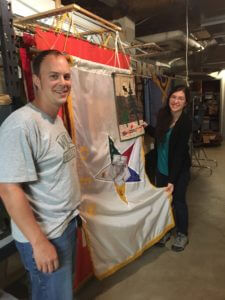
In their first six months on the job, Kevin and Valerie have inventoried close to 3,000 objects. They have combed through a profusion of old photos, and waded through books and ledgers, banners, scabbards, textiles, figurines, tiaras, games, fine china, furniture and countless other items. The goal for the first year is to inventory about 8,000 items.
And that’s no small task. For each item, Valerie and Kevin must take a photo, upload the photo to a computer program, measure and describe the item, and arrange for the items’ safe storage. They also number each item for tracking purposes.
The initial inventory description is fairly succinct. For instance, a book is identified by its title, publisher, topic and the colors, size and condition of its binding.
If the book is subsequently catalogued for possible display or for public access, the description becomes much more detailed. Staff would include details about the book’s content, names of important people and key excerpts. They would also delve into where the book originated, any pages with maker’s marks and from whom or what entity the book came to be in our collection.
Care and Preservation
Different types of treasure have unique qualities and care needs. Old curled photos, for example, must be humidified so they don’t break when flattened. Items made of fabric need a dry environment so they are less likely to mold, and protection from light that could fade the color. Books need some humidity to prevent decay from dryness and cracking, but too much moisture could lead to other problems.
Disassociation is another challenge for inventory and preservation efforts. The word simply means pieces or elements of an object were not kept together, compromising its worth as a complete original. This could happen with a tea set for which staff find only four cups and two saucers. Or, similarly, if pieces of a costume or uniform have gone missing, the item is less representative of the original and sometimes harder to identify.
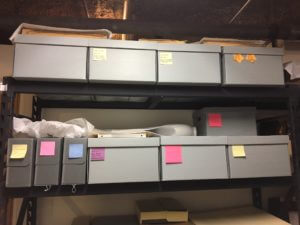
As they inventory, Valerie and Kevin work to optimize the conditions in which objects are stored. Some tools in their arsenal include acid-free boxes. Naturally occurring acid in wood and other elements cause yellowing and decay. So, in short, every box, tissue paper, and thin foam that is used to keep objects safe has to be acid free.
Acid-free paper and foam also keep items from touching. Abrasion, where items rub against one another, is another factor that leads to degradation. For fire-damaged items, protective coverings can help prevent further disintegration.
Environmental Controls

Kevin and Valerie’s work space contains data loggers to monitor temperature, humidity and light intensity. Kevin notes that an ideal storage environment is 65 degrees with 40 percent humidity. It’s equally important, however, to maintain a stable or static environment. Extreme shifts in temperature and humidity are potentially the most damaging to aging paper/photos, fabrics, wood and masonry.
For fragile items that might be compromised by too much handling, Kevin and Valerie wear powder-free nitrile gloves that prevent the transfer of oils from their hands. If they discover mold on an item, Kevin and Valerie must wrap it securely and transfer it to a freezer. Once freezing renders the mold dormant, they can clean it off.
Samples of Masonic History Finds
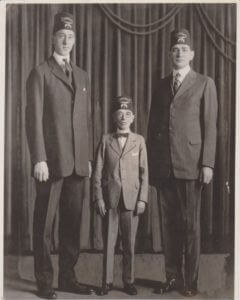
When asked what he most enjoyed discovering in the collection, Kevin pointed to some of the old photos. Among them, the photo on the right that shows the tallest and shortest Zuhrah Temple members. The two tallest are 7 feet, 3.5 inches and 6 feet, 8 inches—making the 4 foot, 11 inch man look very short indeed. One change over time has been the shift from all formal poses to more casual shots as cameras became more widely used and affordable for Lodges and members.

Valerie also likes the photos. More recently she has been working with photos that show an entire class of Masons that were in a certain Lodge at the beginning of the 1900s, as well as large sheets with individual head shots of each member. She has also spent time inventorying Order of the Eastern Star artifacts. Shown at left is a Job’s Daughter figurine. The collection also houses a large number of Job’s Daughters scrapbooks that tell a colorful story.
Next Steps
At a basic level, the inventory project goal is to have a record of every item in our collection. Beyond that, we plan to create a searchable database that will live on the Masonic Heritage Center website. Once all of the inventorying is complete, more in-depth cataloging can continue. Catalogued entries are the content for the public-facing museum search program.
The hope now is that the museum will secure another year of funding so Kevin and Valerie can complete the work they started. By preserving items from Masonic history, they are illuminating a better-informed future for Masonic endeavors.
